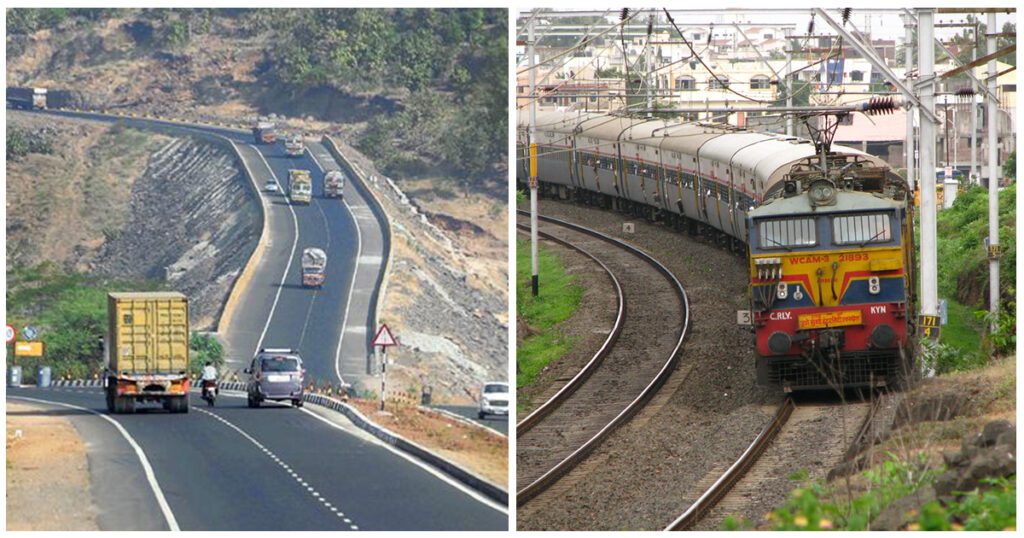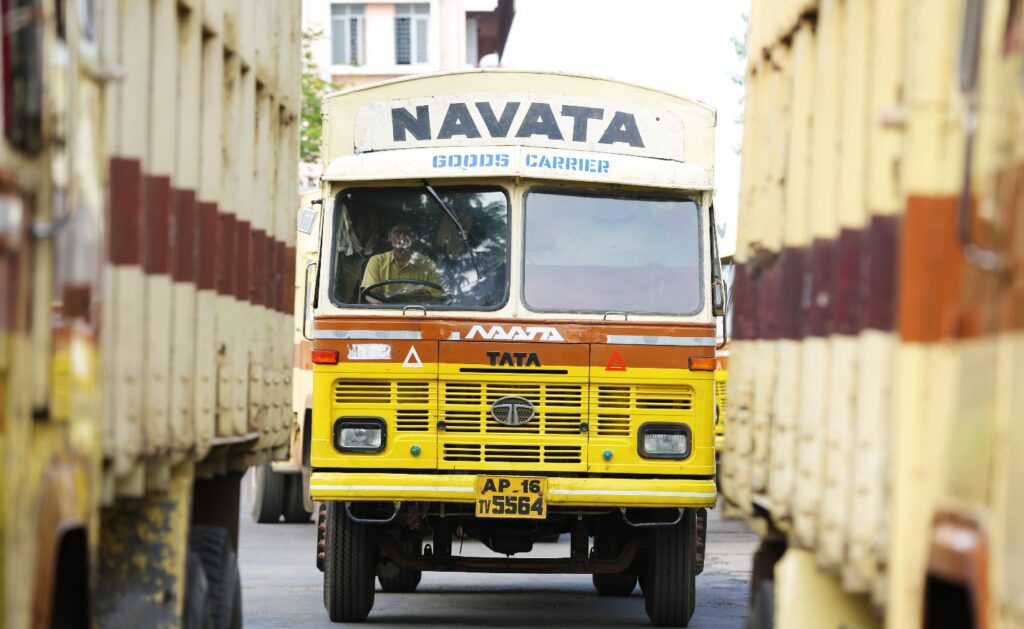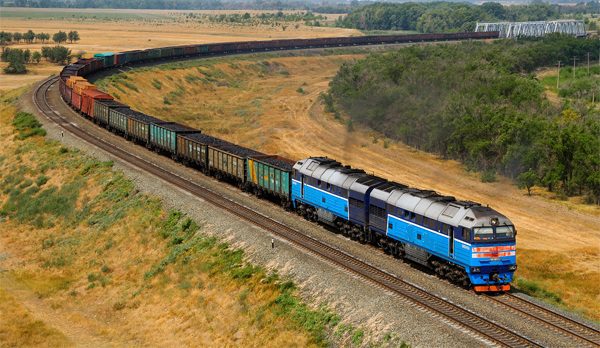The Right Mode Of Transportation – Rail Transport vs Road Transport
Table of Contents
Mode Of Transportation
One of the most ancient and popular mode of transportation has always been the ground transportation. Since time immemorial all trade, and consequently world economy has been dependent upon freight transport systems that transports goods from one place to another, supporting the commercial culture that is the core pipeline of human society, and something the modern world has become accustomed to.

Road Transport
The most commonly used mode of transportion for the movement of goods, by far, is the road transport. Road transport helps to transport daily needs items like groceries, flowers, fruits, and dry goods, constantly, to markets and destinations all across countries and continents.
As goes the common saying, “If you got it, a trucker brought it!” The distribution and delivery of retail and other forms of cargo, from and to various DCs (Distribution Centers), heavily relies upon road freight systems.

Rail Transport
In situations of long transit times, such as in countries like China, Russia, USA and parts of Europe, Rail Transport is the preferred mode of transportation. Freight trains are equipped to carry various types of cargo, such as freight containers, vehicles, livestock, and also commodities such as grains, coal, minerals and metals etc.
Considering the transport, geographical, social and commercial dynamics, choosing the best mode of transportation is extremely important to ensure that the needs of both, the company and the consumers, are met.

Road Freight and Its Advantages
Road transportation has many advantages that make it one of the most popular mode of transportation.
One of the most unique and attractive features of road transport is flexibility, in terms of timeframe, final destination and volume of goods to be transported. It can reach remote areas, carry both large and small shipments at economic costs, and adjust to different timeframes as per convenience.
Availability of road transportation 24 hours a day, and its affordability, as compared to other mode of transportation, makes it popular and attractive.
Trucking industry is also known to accommodate different types of cargo. Road transport is also adapted to cater to the shipping of specialty services and goods, like shipping of dry freight, whether frozen, fresh, or refrigerated, and heavy or oversized freight. There are many transport companies available, that provide specialized services for special category goods.
Limitations of Road Transport
Everything comes with a downside. The downsides of road freight are the restrictions of traffic regulations and speed limits. Unpredictability of weather conditions is another challenge that causes delays in the road shipping schedules. Unforeseen accidents and hold-ups are a risk.
With so much constant movement, minor and major hiccups causing delays, cannot be ruled out. Under the circumstances, the best solution is to plan ahead, factoring in a time margin, or collaborate with a logistics company that has tracking and tracing capabilities, and a well-established network.
Rail Transportation and Its Advantages
Rail transport is the fastest transport mode on land, and it has its benefits. Rail transport is much faster and more reliable, and also least affected by weather conditions and traffic jams. Large volumes can be shipped over greater distances, in a cost-effective structure, by rail transport easily. Therefore, rail transport is more economical, and much quicker for transporting large volumes of cargo.
Rail transport is also an integral part of an intermodal strategy. Intermodal is using two or more mode of transportation, for transporting freight. Rail transport is often used as part of an intermodal strategy, as there are significant benefits to it.
In situations where road and rail transport are combined, trains are used for the long-haul portion of the shipment, and trucks are used to bring freight from the origin or pick-up, to the terminal, and then from the terminal to the destination, referred to as drayage. Commodities like electronics, clothes, machinery, plastics, and lumber, are typically moved via intermodal rail transport.
Limitations of Rail Transport
Despite the great advantages of rail transport, there are certain limitations too. Rail transport doesn’t cater to all types of load. Distance is a limiting factor. Rail transport is not for short distances. Also, the shipper and the consignee should be no more than 100-200 miles from a major metro area that has a terminal. There are no guaranteed transit times, hence rail is not recommended for time-sensitive loads.
There are rules and regulations that need to be adhered to, in case of rail transport. Hence, shipping of prohibited or restricted articles is not possible via rail. Prohibited articles include commodities that are dangerous or could damage equipment, like carbon black, raw animal hides, and used auto parts that leak. Restricted commodities require permission ahead of time, and may be constrained to certain lanes only, or subject to different pricing.
Intermodal containers are subjected to a great deal of movement and rough handling during transit. This can cause damages. Hence it is important that proper block and brace techniques are used. If the goods are not blocked and braced by rail standards, then there is the risk of claims being denied, in case of damage.
The advantages and disadvantages of each mode of transportation must be weighed, when deciding upon the mode of transportation for use.
Road and Rail Transport and Their Contribution to Indian Economy
In India, the transportation industry supports innumerable industries and businesses such as agriculture, infrastructure, mining, etc., and helps these industries to grow.
Undoubtedly, transportation industry in India contributes significantly to the development of Indian economy. Out of all the mode of transportation, be it road, rail, water or air, road and rail transport take credit for shipping the maximum number of cargo, throughout India.
Hence, Road and Rail transport are both important contributors to Indian economy, in their own unique ways.
Rail and Road Transport - Contribution to GDP
The logistics sector is a major contributor in the growing GDP of India. It contributed 6.5% in 2012-13, which is an increase from 6% in 2001-02.
The growth rate of the freight industry is poised at the rate of 8.5% per annum. An increase in road transportation from 3.9% to 4.9%, within the same duration is behind the stupendous growth spurt in the Indian logistics industry. Railways, however, show a marked reduction in their GDP share from 1.2% in 2001-02 to 0.9% in 2012-13.
The large number of privately-held road transport companies have ushered in fierce competition, leading to the reduction in shipping costs. This has made road transport even more popular, giving road transport a boost. Railways, on the other hand, are operated by government. Hence, railways have seen minimal rise and fall in prices, leading to low GDP contributions.
Freight Movement Traffic
The most crucial mode of transportation today are railways and roadways. Even though Rail transport was the major mode initially, in the past few years Road transportation has dominated the industry completely.
The railway traffic share in 1950-51 was a whopping 80%. However, Roadways took over 65% of the traffic in 2011-12. Indian Railways transports nearly one billion tons of goods every year. Yet, Railway system achieved a growth spurt of only 1% in 2015-16, as compared to 4-4.5% in the past recent years.
Expensive fares, limited capacities and extreme competition are the major causes for the shrinkage of this growth percentage in rail transport. On the other hand, Road transportation successfully overtook railways in the last couple decades.
Railways lag behind when it comes to providing satisfactory customer service. On the other side, the construction of new highways have opened possibilities of doorstep service in road transportation, and is a huge boost for the road transportation, that is seeing a growing demand for roadway freight movements.
Reflection of Freight Traffic
The projection of freight movements by road vs. rail transportation would be 50:50 of 2031-32 as compared to present scenario of 65:35 in 2017, predicts National Transport Development Policy Committee. These calculations are based on the assumptions that the growth rate is 1.2 times the growth rate of GDP.
In the future, logistics industry sees a positive growth spurt for rail and water transport. There is an assumption of 15% increase in railway transportation within the next 15 years, owing to the focus on reducing environmental pollution and encouraging green transportation. This will push the logistics industry to take up Railways and Waterways as the more eco-friendly mode of transportation.
Bottom Line
Roadways currently rule the freight industry. However, truck owners will need to adopt environmentally-friendly ways in order to sustain themselves in the logistics market.
With the growing focus on environment, road transportation may be pressured to shut down, or invest in other ways, if the issues relating to pollution and environment are not addressed. This will naturally reflect a drastic change in the transport sector.
Blog: The Right Mode Of Transportation - Rail Transport vs Road Transport, 2020.
Powered By 360Presence
Leave a Replay
mode of transportation mode of transportation mode of transportation




